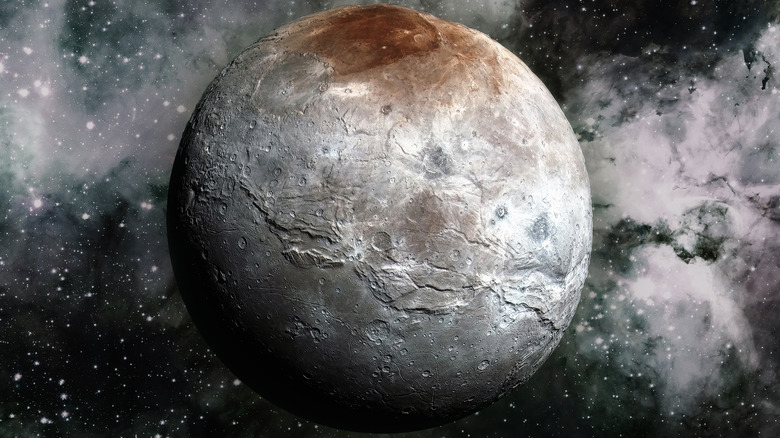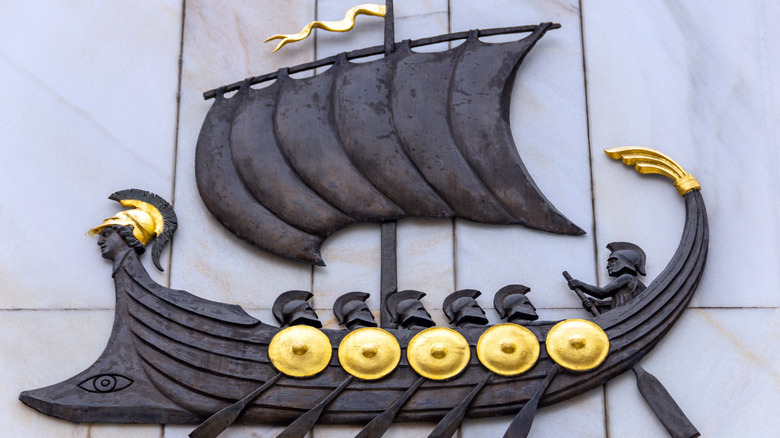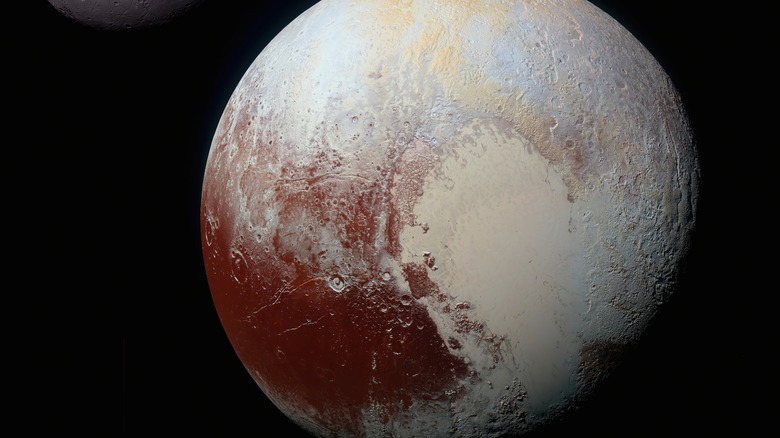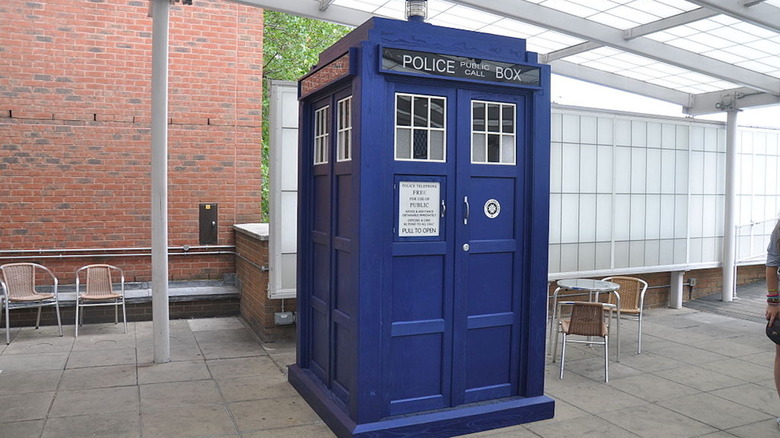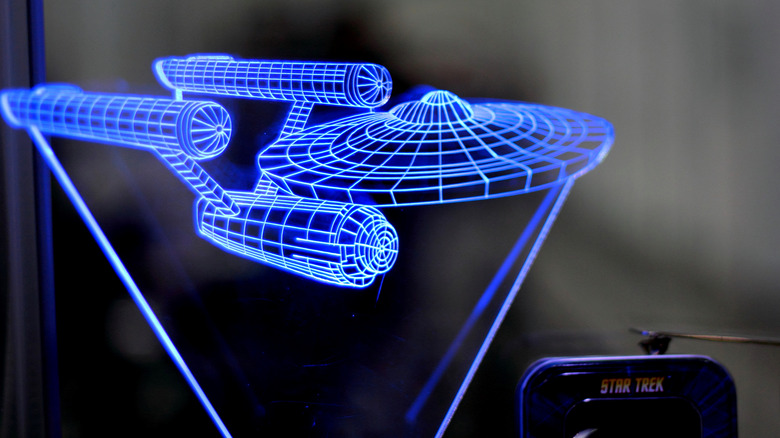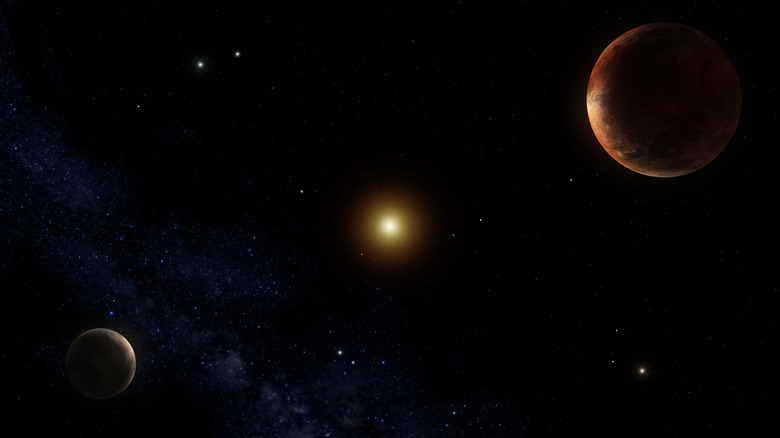The Names Of Sections Of Pluto's Moon, Charon, Seem Straight Out Of Comic-Con
Never let it be said that the National Aeronautics and Space Administration (NASA) doesn't have a sense of fun. While exploring space is serious business, the agency gave a nod to the science fiction world when it came to naming the sections of Pluto's moon, Charon. The moon, discovered in 1978 by astronomers James Christy and Robert Harrington, is named after the mythological ferryman who carried the souls of the dead across one of the five rivers in the underworld (via NASA).
In 2006, NASA launched the interplanetary space probe New Horizons to study Pluto and nearby objects, and in 2015, the craft began collecting images that included Charon. To mark the occasion, the New Horizons team reached out to fans for suggestions naming some of the more interesting features during its "Our Pluto" campaign. Thousands of submissions were sent to the International Astronomical Union (IAU), which is responsible for naming celestial bodies. Some of the names the organization selected look like they came straight from Comic-Con.
Approved names focus on exploration
The IAU based the names of Charon's features into the following categories: exploration authors, artists, and directors; and fictional explorers, travelers, destinations, origins, and vessels. Approved names emphasize literature focused on exploration, and three science fiction pioneers honored include writers Octavia E. Butler, Arthur C. Clarke, and director Stanley Kubrick, who have "mons" named after them (via IAU). According to the IAU, a mons is a mountain. Butler wrote the "Xenogenesis" trilogy, which deals with space travel, Clarke wrote "2001: A Space Odyssey," and Kubrick is known most notably for his film "2001: A Space Odyssey," for which he won an Academy Award for best visual effects.
Another feature on Charon worthy of naming includes a chasma, which the agency explains is a "deep, elongated, steep-sided depression." Argo Chasma is named after the ship Jason and the Argonauts used in the ancient Greek poem "Argonautica." According to the IAU, the Caleuche Chasma gets its name from the legendary ship that sailed the seas collecting the dead.
Many craters get their namesakes from science fiction
The IAU defines craters as defined as round depressions, and several of Charon's craters are named after adventurous characters in fiction stories. The Pirx Crater is named after the time-traveling character in many Stanislaw Lem stories, while the Dorothy Crater gets its name from the main character in L. Frank Baum's novel, "The Wizard of Oz." Meanwhile, the Nemo Crater honors the captain from Jules Verne's novels "Twenty Thousand Leagues Under the Sea" and "The Mysterious Island," per IAU.
Other characters receiving the honor of having a crater on Charon named after them go farther back in human history. Revati Crater gets its namesake from the main character in the ancient Indian text "Mahabharata," Nasreddin Crater gets its name from the character in many European and Asian folktales, and the Sadko Crater pays tribute to the explorer who traveled to the bottom of the sea in an ancient Russian tale, explains the IAU.
Unofficial names honor fictional travelers, places, and unusual items
Several unofficial areas on Charon bear the name of fictional pioneers. For example, Vader Crater, Skywalker Crater, and Leia Crater (from the "Star Wars" universe) sit south of the Mordor Macula, which gets its name from J.R.R. Tolkien's "Lord of the Rings" trilogy (via Space Flight Insider). A macula is defined as a dark spot that may be irregular, and of all of the features named, it is the largest, sitting north of all other named features, per a map displayed in Universe Today.
Ripley Crater is north of the Nostromo Chasma (from the "Alien" universe). Alice Crater, named for Lewis Carroll's "Alice in Wonderland," sits northwest of the Serenity Chasma, which gets its namesake from the "Firefly" television series. Elsewhere, Serenity Chasma sits northeast of Macross Chasma, which gets its name from Shōji Kawamori's anime series of the same name.
NASA also honored the Star Trek universe
No Comic-Con would be complete without "Star Trek," and this universe is represented more than any other when it comes to named features on Charon. In fact, four characters and one race all earn a spot on the satellite — Spock Crater, Kirk Crater, Sulu Crater, and Uhura Crater are situated somewhat close to each other in what is known as the Vulcan Planum (per Spaceflight Insider). A planum is defined as a high plain, and to date, Vulcan Planum is the only planum named on Charon. Kubrick Mons and Clarke Mons sit atop this large plateau. Kaguya Hime Crater, which gets its name from a Japanese manga series, sits outside the planum, just southeast of Sulu Crater.
The Tardis Chasma is within the Gallifrey Macula, both of which come from the "Dr. Who" series. These chasmas sit just north of the Macross Chasma, which gets its name from the Japanese anime series "Robotech."
Charon was discovered by accident
James Christy and Robert Harrington discovered Charon by accident as they observed Pluto's orbit. NASA reports that they and other experts expected Charon to look like Earth's own moon — tattered and worn with craters, but what photos revealed was a surface covered with mountains, plains, and canyons. In fact, one giant string of craters and canyons about four times longer than the Grand Canyon streaks across the entire face of the satellite. Cliffs in certain areas of the canyon are thought to be taller than any other cliffs in our solar system, including the Argo Chasma, which is about five times higher than the massive cliff in the Grand Canyon, per SpaceFlight Insider.
Some areas of Charon look rust-colored, and experts believe that this is caused by methane that is trapped in the moon's atmosphere. NASA explains that the gas freezes at the moon's pole and is turned into a red chemical called tholins.
